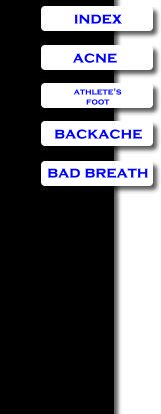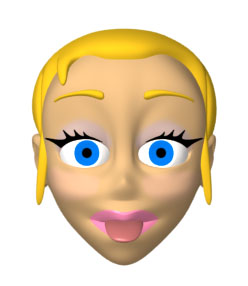

The Complete Acne Treatment Page!
Oh no, just before the big date and I've got another zit coming in!
 Whether you spell it acne
vulgaris, achne, ackne, or akne, or call
them blemishes, pimples, comedones, comedons, blackheads, whiteheads, pustules, zits or
zitts,
or have comedonic, common (pustular) or cystic acne, the condition is
still a very troubling part of adolescence and (in many persons) adulthood. Yet
almost all cases can be successfully treated.
Whether you spell it acne
vulgaris, achne, ackne, or akne, or call
them blemishes, pimples, comedones, comedons, blackheads, whiteheads, pustules, zits or
zitts,
or have comedonic, common (pustular) or cystic acne, the condition is
still a very troubling part of adolescence and (in many persons) adulthood. Yet
almost all cases can be successfully treated.
You can discuss acne problems, and learn the latest news, at the AcneBoards bulletin board.
Prevalence
and Cost of Acne
The National Institute of Health estimates that approximately 85% of Americans 15 to 24 years of age have acne. These sufferers, along with older ones, spend approximately $100 million US dollars per year on over-the-counter treatments, and the cost to the US economy due to unemployment and lost productivity has been estimated at $1000 million per year.
Definitions
Comedone or comedon, a non-inflamed whitehead or blackhead. Whiteheads are closed comedones, blackheads are open comedones.
Papule, a small red elevation of the skin.
Pustule, similar to a papule with a central pus-filled area.
Risk Factors
Being a teenager is the primary risk factor for acne. Males tend to have worse acne than females. Surface oil is not a cause of acne. There is no evidence that chocolate or sugar exacerbate acne, and little evidence that stress affects it.
Treatment
of Acne
Many chemical and physical methods have been tried to prevent and cure acne. The chemicals include aluminum chlorhydroxide/sulphur, topical clindamycin, topical erythromycin, benzoyl peroxide, topical isotretinoin, tretinoin, oral tetracycline, and norgestimate/ethinyl estradiol. Unfortunately, most research results have not been reported in a standard manner so there is no universally-recognized best treatment regimen -- each doctor makes the decision on a case-by-case basis. The patient's age and previous treatments, as well as possible pregnancy, will be considered in making the decision.
One important thing to keep in mind is that isotretinoin (AccutaneŽ) is very likely to cause severe birth defects, so it must not be used by women who are or could become pregnant.
Many physicians will choose to treat comedonic acne with washing of the skin with soap or antibacterial detergents, retinoic acid cream or solution, adapalen gel or benzoyl peroxide (3 to 10% strength), or azelaic acid.
Common, or pustular, acne is frequently treated with clindamycin solution (an antibiotic) and/or ultraviolet light. Blue Light (ClearLight - Lumenis) may also be tried. If this treatment is not successful after two months, the doctor may move on to systemic antibiotics like erythromycin or tetracycline.
Cystic acne and conglobate acne require systemic antibiotics. Cases of acne fulminans should be referred to a dermatologist without delay.
Women may wish to consider treatment with cyproterone acetate (an anti-androgen) and oestrogen for 6 months, to reduce the excretion of sebaceous glands.
Reportedly, there is not enough data to evaluate the effectiveness of spironolactone for the treatment of acne.
After acne has completely subsided the patient may wish to consider scar removal, performed by a dermatologist or plastic surgeon.
If you visit your doctor:
Your physician will want to know what you have tried already.
Remember that acne treatments take up to 8 weeks to work, and during that time the acne may actually worsen before improvement is noted.
Here are some alternative spellings that people have used when searching for the information on this page: cane, acme, cain, ceine, acne, ance, anc, enc, ence, anse, ense, acen